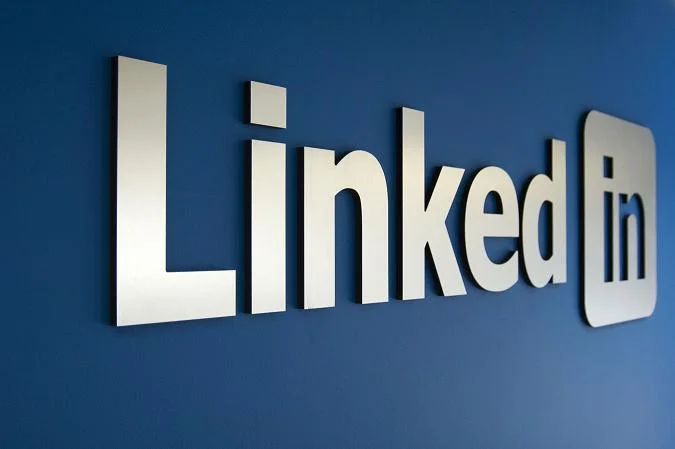How many times in a day do people approach you or your gatekeeper with a request, suggestion or some other time-consuming appeal? Like many other business leaders, your first inclination may be to say, “OK,” or “Yes, I’ll look into that.” You want to help others or find ways to move a process along with your input. Here are four things to consider…
How to Motivate and Recognize Your Sales Team
Assembling a high-performing sales team is challenging enough, but that’s just the start of any focused sales effort. With quality salespeople in place, the next task is determining how best to motivate and recognize the hard work they do on your company’s behalf.
If your sales team’s performance has been lackluster or you sense that morale is slipping, keep these tips in mind:
What Core Values Are and Why We Need Them [Video]
The Power of Written Strategies
In a video interview with the Entrepreneurs Organization (EO), Nick Leighton, bestselling author of Exactly Where You Want to Be explains why it is so important for business owners to physically write out their strategies and what can they benefit from sharing their goals with someone else… you will learn this in the following 90-second interview.
6 Tips on Turning Great Employees into Outstanding Leaders
The current job market is so tight and competitive, why make it any more difficult to recruit and retain the right people for your company? Too many businesses focus on getting bodies into open positions, but neglect grooming new hires (as well as veteran employees) for positions of greater responsibility and leadership. Here are tips on team development that can yield strong new leadership for your company…
The Smart Way To Grow Your Business
How to Drive Marketing with Engaging Social Media
The true power of social media is the ability to get dozens, hundreds or even thousands of people to share your messages, but people won’t share just anything. In fact, today’s online customers are more discerning than ever. That’s why it’s essential to focus your social media strategy only on the most shared content – the post formats that are likely to result in the most shares…
Social Media – the Small Business Owner’s Checklist [Infographic]
Social media can confuse a business owner. They know they need to do it, often feel intimidated, sometimes get sucked in so it saps time from other valuable business actions. More worrying they can’t always prove that it has an ROI (return on investment). Then, like so many actions, it dwindles, and that lack of ROI is a self-fulfilling prophecy. So, how do you win at the social media game?
Five Tips for a Better Presentation
Is “Emotional Marketing” the Best Way to Connect with Customers?
According to the Small Business Association, “All humans feel four basic emotions: happy, sad, afraid/surprised, and angry/disgusted.” Of course, no business wants to spur feelings of disgust or anger with their customers, but as the SBA adds, “creating strong emotions—either positive or negative—can help build a bond between your customers and your business,” which is definitely a goal all businesses share.
If you’re looking for a stronger connection with your target audience, here are tips on emotional marketing that might resonate with your target audience…
7 Tips for Managing Your Millennial Sales Team
We often hear that millennial employees are a breed apart and require a shift in management style and perspective. The same can be said about a millennial sales team and what’s needed to effectively manage and leverage their particular outlook and talents. Generally speaking, think of these younger salespeople as self-confident, positive thinkers who are thoroughly comfortable with digital technologies in all forms, and ready to take on sales challenges unique to your company and industry...
Use Technology to Enhance Your Employee Communications Efforts
If improving communications with your employees was on your 2018 list of resolutions, there are many ways to leverage digital technology to achieve this goal. Businesses that still rely on a “suggestion box” in the break room or some similarly out-of-date mechanism should consider adopting current technology to make employees feel more involved and part of the team...
6 Business-Damaging Social Media Mistakes to Avoid
As a business owner, you know that social media offers an unprecedented opportunity for businesses to engage with their current customer base, connect with potential new customers and greatly enhance brand awareness. Whether you’re looking for more business or to expand your team, you need to engage. At the same time, those without much experience in social media may encounter a landscape crowded with potential minefields that can—if you’re not careful—inflict significant damage on your brand.
Here are six social media mistakes your business should avoid:
LinkedIn – for highly intelligent business owners, who are just getting starting on Social Media
Maybe you have a wealth of experience and one (or multiple) businesses, but you just haven’t used LinkedIn before. It happens. Then 2018 rolled around, and you took the bold decision, that if you’re doing any B2B marketing or networking, you need to be on LinkedIn.
Not many professionals say, “don’t see the need to waste time on LinkedIn.” But I do know a number of business owners and CEOs that feel they missed the boat the first time around, and now don’t know if or how to start.
First off, there is no ‘if’. If you own a company, then whether you want sales or new recruits (and the correct answer is – yes, I need both) then you need to be on LinkedIn. So, here is what you need to know.
Tactics for Strategic Cost-Cutting in Your Business
How to Better Negotiate with Vendors (and Save Money)
Some business owners are born negotiators. They know how to persuade, cajole, seduce and otherwise convince vendors to accept the deal they want.
But plenty of other CEOs and business leaders don’t have negotiating built into their DNA. The outcome of every negotiating session is a question mark, which adds an element of stress to an already difficult situation. What’s the best price I can hope to obtain for a supplier’s goods or services? If I need the vendor’s offering badly enough, am I always destined to pay through the nose?
Find out more and get your top ten tips for negotitaion...
What to Include in Your B2B Marketing Plan
Nowhere is the celebrated “buyer’s journey” more relevant than with B2B companies and their customers. With the vast array of digital resources at their command, these customers embark on the journey by conducting extensive research, comparing companies and exploring social media—sometimes well before they make direct contact with the business they’re most interested in.
As a result, B2B companies need to “up” their marketing game, in order to be ready when the buyer’s journey leads to them.
Here are tips for key elements and action steps for a marketing plan that keeps your business “top of mind” for current and prospective customers:
Focus on your core audience. Some businesses try—and generally, fail—to be all things to all customers. An effective marketing plan should focus on a clearly defined customer segment, so as to avoid diluting the appeal and effectiveness of a company’s key products or services.
Tailor content to meet that audience’s needs. The type of content you offer to customers (website, blog posts, articles, white papers, etc.) is a crucial element of any marketing plan. This, in turn, means thoroughly understanding what drives your customers—their needs, desires, pain points, etc.
“You need to know how your buyers like to buy and what they respond to,” notes Forbes contributor AJ Agrawal. “This will put you in the best possible position to sway them to making a purchase.”
Creating a comprehensive buyer’s persona to help with both marketing and sales leads is one highly effective way to ensure you’re hitting the right note in your content efforts.
Refresh the content and design of your website. Remember, the buyer’s journey almost always includes a visit to your B2B website. It’s in your company’s best interests to ensure that a consistent and appealing marketing message is built into virtually every page on that site. Don’t let old material or an unchanging homepage discourage potential interest.
As always, your site must also be user-friendly and informative (meaning, little or no fluff!), with a focus on how your products or services benefit the customer, as opposed to making your company look good.
Commit to a strong social media presence. Buyers will usually check out your company’s presence on LinkedIn, Facebook, Twitter and other industry-specific social networking sites. If you’re not already doing so, 2018 is the right time to commit to an in-depth social media marketing strategy. This can include:
- Using social media to gather data on customer preferences
- Becoming an industry thought leader through high-quality, customer-focused content
- Engaging in two-way communications with customers and prospects
- Monitoring online discussions of your industry
Your B2B marketing plan should specify the kinds of social media initiatives and activities planned for the new year and, ideally, assign this key responsibility to an individual or team with experience in this area.
Write a plan that’s clear and accessible throughout the company. While assembling the B2B marketing plan, keep in mind that shifting industry conditions may require a re-examination of basic ideas and strategies throughout the coming year. Consider assigning a knowledgeable team member with the responsibility to review the plan on a regular basis—identifying those elements and marketing goals that still make sense to pursue and refining other strategies that may have been rendered irrelevant by new market conditions.
The “marketing environment is always dynamic,” notes marketing technology expert Anita Brearton. “Create your strategy and plans in a way so you can adjust quickly to changing marketing conditions and customer requirements.”
Want to learn more about marketing and planning for your business? Find out if a TAB Board is right for you!
Networking Made Easy
5 Crucial Things a Peer Advisory Board Can Do for Your Business
As a business owner, you wear multiple hats. Because no one is equally good at everything, some of your hats are a little too big or a little too small – but you wear them anyway. Only people who have run a business can possibly identify with the pressure to be a Jack of all trades in this way.
To the business owner, a peer advisory board is a room full of people who know what it is to wear the hats. They’re the people who know what it takes to steer a business toward success, because they’ve done it – or are in the process of doing it – themselves.
By taking advantage of group knowledge and experience, you’ll be able to...
How To Communicate With People Who Are Different Than You
DISC Communication Styles
People have unique ways to communicate with each other. When you understand people are uniquely different based on their communication styles then you can better relate to your customers, peers and in your personal relationships. The key is to understand yourself first. We measure communication styles with the DISC assessment.
- How we express our internal emotions through our external behavior
- How we prefer to interact (temperament) with the environment and the people around us
DISC represents four different communication styles
D-Dominance - How we solve problems
I-Influence - How we relate to people
S-Steadiness - Our pace and energy level
C-Compliance - How we respond to rules and procedures
Once you understand yourself, you can use the following guide to help you communicate more effectively and efficiently with different people:
Communicating with the High D
- Don’t ramble on or waste their time.
- Stay on task.
- Be clear, specific and to the point.
- Don’t try to build personal relationships or chitchat.
- Come prepared with all objectives and requirements in a well-organized manner.
- Be prepared and organized.
- Present the facts logically; plan your presentation efficiently.
- Provide alternatives and choices so they can make their own decisions.
- If you disagree, focus on the facts, not the High D’s personality.
Communicating with the High I
- Talk and ask about their ideas and goals.
- Plan interaction supporting their goals and ideas.
- Allow time for relating and socializing.
- Don’t drive to facts, figures and alternatives.
- Help them get organized and put details in writing.
- Don’t leave decisions in the air.
- Provide ideas for implementing action.
- Provide testimonials from people they see as important or prominent.
- Offer incentives for their willingness to take risks.
Communicating with the High S
- Don’t rush headlong into business or the agenda.
- Show sincere interest in them as people.
- Draw out their personal goals and objections.
- Don’t force them to make a quick response.
- Present your case logically, non-threateningly and in writing.
- Break the ice with some personal comments.
- Ask specific questions. (How?)
- Don’t interrupt as they speak. Listen carefully.
- Look for hurt feelings if the situation impacts them personally.
Communicating with the High C
- Approach them in a straightforward, direct way.
- Recognize they may be uncomfortable speaking too large groups.
- Ask them if they see the issue the same way as you do.
- Provide them with information and the time they need to make a decision.
- Don’t be informal, casual, or personal.
- Build credibility by looking at each side of the issue.
- Don’t force a quick decision.
- Be clear about expectations and deadlines.
- If you disagree, prove it with data and facts or testimonials from reliable sources.
If you are interested in completing our DiSC assessment or running a company training session in this area, then give us a call or drop us an email.



![What Core Values Are and Why We Need Them [Video]](https://images.squarespace-cdn.com/content/v1/5637c084e4b01270cf2c5515/1530488389078-2ENMBQLCMY3LB5RXKDY7/trees-sky.jpg)




![Social Media – the Small Business Owner’s Checklist [Infographic]](https://images.squarespace-cdn.com/content/v1/5637c084e4b01270cf2c5515/1526914133366-6S25FDILBSCW39SDEZ5Y/social+media+keyboard.jpeg)









